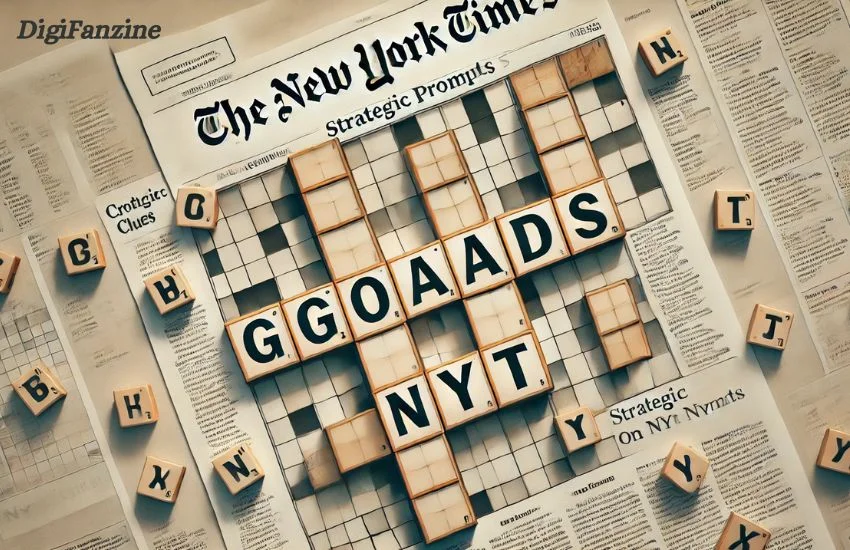
Goads on NYT Unveiling the Ultimate Engagement Strategy
Goads on NYT: Unveiling the Ultimate Engagement Strategy
Goads on NYT can be understood in two primary contexts: crossword puzzles and digital advertising. Both contexts highlight the New York Times’ innovative approach to engaging its audience, whether through stimulating puzzles or interactive advertising. This article delves into the nuances of both meanings, exploring how they contribute to the overall experience of NYT readers and users.
Goads on NYT Crossword Clue
One common interpretation of “goads on NYT” relates to the crossword puzzles published by the New York Times. In the realm of crosswords, “goads on” is a clue that has appeared in various editions, particularly in the Mini Crossword. The answer to this clue is typically “URGES,” which fits well within the context of the puzzle, aligning with the theme of encouraging or prompting someone to take action. This clue exemplifies the clever and engaging nature of NYT crossword puzzles, which challenge and entertain solvers daily.
The Significance of Crossword Clues
Crossword clues like “goads on” are significant for several reasons:
- Cognitive Challenge: They test the solver’s vocabulary and cognitive skills, requiring lateral thinking and connections between different words and concepts.
- Mental Exercise: They offer a stimulating mental activity that can be both relaxing and challenging, providing a break from daily routines while still engaging the brain.
The Appeal of NYT Crosswords
NYT crosswords are celebrated for their blend of difficulty and enjoyment. Clues like “goads on” prompt solvers to think about words associated with encouragement or stimulation, testing their vocabulary and conceptual connections. These puzzles are crafted to be intellectually stimulating, offering a rewarding mental exercise.
Cognitive Benefits of Solving Crosswords
Engaging with clues such as “goads on” offers numerous cognitive benefits. Regularly solving crossword puzzles has been shown to improve memory, increase vocabulary, and enhance problem-solving skills. The mental stimulation helps keep the brain active and sharp, making the daily crossword a ritual that combines relaxation with mental agility.
The Craft of Creating Crossword Clues
Creating clues like “goads on” requires a deep understanding of language and wordplay. Crossword constructors balance difficulty and solvability, ensuring the puzzles are challenging yet fair. The clue “goads on” demonstrates how a simple phrase can be transformed into a mentally engaging puzzle element.
The Community of Crossword Solvers
The NYT crossword community is vast and dedicated. Many solvers engage in discussions about challenging clues, sharing insights and strategies. Clues like “goads on” often become topics of conversation, fostering a sense of camaraderie among enthusiasts and enriching the experience.
Goads in NYT Advertising
Beyond crossword puzzles, “goads on NYT” also refers to strategic advertising elements integrated into the New York Times digital platform. These goads are interactive components designed to engage readers and drive them to take specific actions, enhancing user experience and increasing engagement.
The Evolution of Digital Goads
Initially, goads on the NYT platform were simple pop-ups or static banners meant for monetization. Today, they serve as integral parts of the reader’s interaction with content, providing additional resources or related information, thereby deepening reader engagement.
Types of Goads on NYT
- Editorial Goads: Integrated into journalistic content to provide readers with extra resources or pertinent information, deepening understanding and sparking curiosity.
- Advertising Goads: Sponsored content, videos, and banners strategically placed around the NYT platform to draw in viewers and highlight products and services.
- Interactive Goads: Multimedia components like polls, quizzes, and interactive visuals that promote active participation and create stronger connections between the content and the audience.
Benefits of Using Goads on NYT
- Enhanced Reader Engagement: By integrating goads within editorial content, the NYT can significantly enhance reader engagement, encouraging deeper exploration of topics.
- Revenue Generation: Goads contribute to the financial sustainability of digital media by generating income through strategic placement and interaction.
- Targeted Advertising: Goads allow for highly targeted advertising, ensuring that the right demographic sees the ads, leading to better-qualified leads and higher conversion rates.
- Improved User Experience: Interactive goads make the browsing experience more engaging and enjoyable, transforming passive reading into an interactive experience.
Challenges and Solutions
While goads on NYT offer numerous benefits, they also present challenges such as ad fatigue, ad blocking, and privacy concerns. Creative solutions include:
- Ad Customization: Tailoring ads to the interests and preferences of the target audience to make them more relevant and less intrusive.
- Native Advertising: Creating ads that blend seamlessly with the editorial content, making them less disruptive and more engaging.
- Transparency in Data Collection: Ensuring data collection practices are transparent and that user consent is obtained, maintaining trust and credibility.
Future Trends in Goads on NYT
The future of goads on NYT lies in personalized and immersive experiences. Advances in AI, augmented reality (AR), and virtual reality (VR) offer exciting possibilities for creating highly targeted and interactive advertisements that resonate more deeply with audiences. These technologies can help deliver customized content that meets the specific needs and interests of readers, enhancing engagement and satisfaction.
Case Studies: Successful Goads Campaigns
Numerous brands have successfully used goads on NYT to achieve their marketing objectives. For instance, a recent campaign by a leading tech company used interactive quizzes to engage readers and educate them about new product features, resulting in a significant increase in website traffic and lead generation.
Conclusion
Goads on NYT, whether in the form of crossword clues or digital advertisements, play a crucial role in engaging audiences and enhancing their experience. In crossword puzzles, goads like “URGES” challenge solvers and provide a stimulating mental exercise. In digital journalism, interactive goads drive reader engagement, generate revenue, and improve user experience. As technology evolves, goads will become even more integral to content consumption and interaction on platforms like the New York Times. By understanding and leveraging the multifaceted nature of goads, publishers and advertisers can create more engaging, effective, and ethical content that meets the needs of modern readers.







